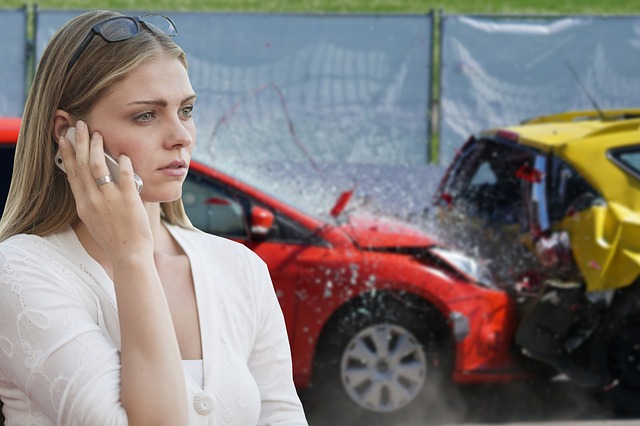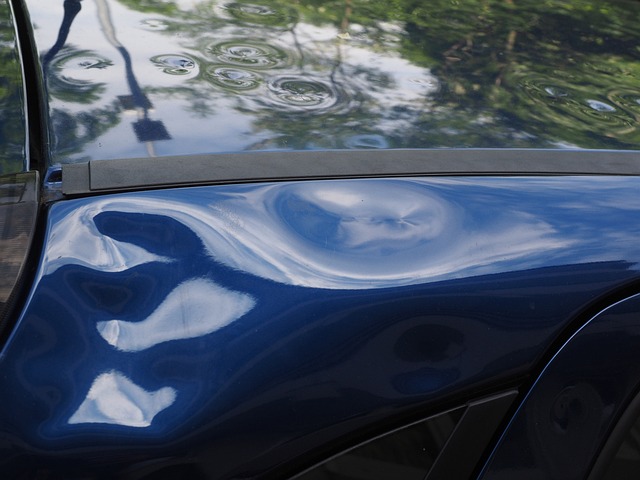As autonomous vehicles (AVs) revolutionize transportation, the motor insurance industry finds itself at a pivotal crossroads. The traditional model of assigning liability based on driver responsibility is being challenged by the emerging era of vehicle system accountability. This article explores the far-reaching implications of this shift, delving into the complex web of insurance liability for AVs. We examine how insurers are adapting their models, dissecting emerging trends in coverage, and emphasizing the importance of consumer protection and industry professional insights in shaping the future of motor insurance for autonomous vehicles.
- Understanding Autonomous Vehicles and Insurance Liability
- The Shift from Driver to Vehicle Accountability
- Traditional Insurance Models Under Scrutiny
- Emerging Trends in Autonomy-Focused Coverage
- Consumer Rights and Protection in the New Era
- Industry Professional Insights and Adaptation
- Navigating the Future of Motor Insurance for AVs
Understanding Autonomous Vehicles and Insurance Liability

Autonomous vehicles, also known as self-driving cars, are designed to operate without human input or control. They rely on a complex network of sensors, cameras, and artificial intelligence algorithms to perceive their surroundings and navigate routes. This technological advancement promises to revolutionize transportation by improving road safety, reducing traffic congestion, and enhancing efficiency. However, it presents unique challenges for the motor insurance industry.
In traditional scenarios, liability in car accidents is often attributed to human error or driver negligence. Insurers assess risk based on driving behavior, history, and demographics. With autonomous vehicles, determining liability becomes more complex. When a self-driving car is involved in an accident, questions arise regarding the role of the vehicle’s systems, the manufacturer’s programming, or even potential software glitches. Insurers must adapt their models to reflect this shift in accountability from drivers to vehicle systems, ensuring fair and accurate coverage for both consumers and providers in this evolving landscape.
The Shift from Driver to Vehicle Accountability

The advent of autonomous vehicles marks a significant shift in motor insurance dynamics, where accountability is transitioning from drivers to vehicle systems. Historically, insurers relied on driver behavior and fault determination as primary factors in policy assessments and claims settlement. However, with self-driving cars making decisions based on complex algorithms and sensor data, the responsibility for accidents shifts to the technology itself. This paradigm change necessitates a reevaluation of traditional insurance models.
As these vehicles navigate roads, their onboard systems process vast amounts of data and make split-second choices, potentially impacting safety. Insurers now face the challenge of understanding and quantifying the risk associated with autonomous vehicle technologies, including sensor failures, software glitches, or cybersecurity threats. This new reality demands innovative approaches to coverage, where policies may need to be tailored to account for different levels of vehicle autonomy and the unique risks they present.
Traditional Insurance Models Under Scrutiny

The traditional insurance model for motor vehicles relies heavily on attributing liability to individual drivers, factoring in their personal history, risk profile, and driving behavior. However, with autonomous vehicles, this model is under scrutiny as responsibility shifts from human operators to advanced vehicle systems. In the past, insurers assessed risks based on driver age, gender, location, and claims history, among other factors. But now, they must consider the intricate workings of self-driving technology, including sensor capabilities, decision-making algorithms, and potential software glitches or cybersecurity threats.
This new era demands a reevaluation of coverage options and policy structures. As vehicles become more automated, insurers are exploring alternative approaches, such as designing policies centered around vehicle performance data, system failures, and the integration of advanced safety features. The traditional model’s focus on individual drivers may need to adapt to reflect the collective responsibility and performance of various vehicle systems, ensuring that insurance keeps pace with technological advancements while maintaining fairness and adequate protection for all parties involved.
Emerging Trends in Autonomy-Focused Coverage

With the rise of autonomous vehicles, several emerging trends are shaping the landscape of motor insurance coverage. One notable trend is the shift from traditional liability models based on driver behavior to systems-based accountability. Insurers are now considering the complex interactions between vehicle sensors, software, and external factors to determine appropriate coverage. This shift necessitates a more nuanced understanding of risk assessment, as the responsibility for accidents may lie not with human error but with system malfunctions or external stimuli.
Additionally, autonomy-focused coverage is becoming increasingly dynamic and data-driven. Insurers are leveraging advanced analytics, machine learning, and telematics data to create personalized policies that adapt based on individual vehicle performance, driver behavior (or lack thereof), and environmental conditions. This trend promises more tailored insurance solutions, ensuring that consumers receive fair pricing while insurers mitigate evolving risks associated with autonomous vehicles.
Consumer Rights and Protection in the New Era

In the new era of autonomous vehicles, consumer rights and protection are undergoing significant shifts. As liability moves from drivers to vehicle systems, consumers have a growing need for clear, transparent insurance policies that accurately reflect their unique circumstances. This includes understanding how data collection and usage will impact their coverage, as well as what responsibilities they may still bear despite the shift to automated driving.
Insurers are now tasked with balancing the protection of individual drivers against potential system failures, while also ensuring fair pricing and adequate compensation for victims. Regulations must be adapted to cover these new complexities, providing consumers with peace of mind and recourse in case of accidents involving self-driving cars. Effective communication and education will play a vital role in empowering consumers to make informed decisions about their motor insurance needs in this evolving landscape.
Industry Professional Insights and Adaptation

Industry professionals are at the forefront of this revolution, actively participating in shaping the future of motor insurance for autonomous vehicles. They recognize that the shift from driver-centric to system-focused liability requires a profound change in risk assessment and pricing strategies. Insurers are collaborating closely with automotive manufacturers and technology developers to gain a deeper understanding of vehicle systems and their capabilities. This collaboration is essential to establishing standardized safety protocols and performance metrics, which will form the basis for new insurance products tailored to autonomous vehicles.
As a result, industry experts anticipate a more nuanced approach to coverage, taking into account factors such as vehicle sensor technology, decision-making algorithms, and real-time performance data. They are developing innovative solutions that consider the complex interplay between human drivers, vehicle systems, and external environmental factors. By embracing these advancements, insurance professionals aim to create fairer and more sustainable pricing models, ensuring consumers have access to comprehensive protection for their autonomous vehicles while also incentivizing safe driving practices.
Navigating the Future of Motor Insurance for AVs

As autonomous vehicles (AVs) integrate into our daily lives, the motor insurance industry must adapt to a new reality where traditional liability determinations become more complex. The shift from driver responsibility to vehicle system accountability raises crucial questions about who is liable in case of an accident—the owner, manufacturer, or AV technology developers. Insurers are reevaluating their models and policies to address these uncertainties.
Consumers and industry professionals alike need to stay informed and proactive as this landscape evolves. Understanding the evolving liability frameworks and technological advancements will be vital for making informed decisions regarding coverage options and risk management. This navigation of the future motor insurance landscape for AVs is not just about adapting to change but also ensuring that safety, security, and accountability are maintained in an era where vehicles operate with minimal human intervention.
As autonomous vehicles (AVs) integrate into our daily lives, the motor insurance industry must embrace a paradigm shift. The traditional model is no longer sufficient as liability and coverage become more complex with the transition from driver to vehicle accountability. Staying informed about these developments is crucial for both consumers and professionals, enabling them to navigate this evolving landscape and ensure appropriate protection in the new era of autonomous mobility.



